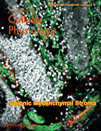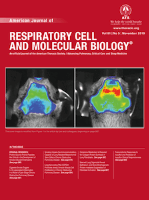
ARCHIVES ITALIENNES DE BIOLOGIE
metrics 2024
Pioneering Discoveries in the Life Sciences
Introduction
ARCHIVES ITALIENNES DE BIOLOGIE, published by PISA UNIVERSITY PRESS, serves as a distinguished platform for the dissemination of research in the fields of Cell Biology, Medicine, and Physiology. Established in 1952, this journal has maintained a commitment to advancing knowledge through diverse biological studies, making it an essential resource for researchers and professionals alike. Though ranked in the Q4 quartile in various biological categories as of 2023, ARCHIVES ITALIENNES DE BIOLOGIE continues to provide a vital avenue for emerging studies and novel ideas in the biological sciences, particularly for scholars seeking to expand their understanding of fundamental biological processes. The journal's rich history and ongoing publication prowess reflect a dedication to fostering academic inquiry within the scientific community. Although it does not currently offer open access options, researchers are encouraged to explore its archives and engage with pioneering research published in its pages.
Metrics 2024
 0.20
0.20 0.80
0.80 0.90
0.90 43
43Metrics History
Rank 2024
Scopus
IF (Web Of Science)
JCI (Web Of Science)
Quartile History
Similar Journals

Military Medical Research
Fostering innovation to improve the lives of veterans and service members.Military Medical Research is a premier open-access journal published by BMC, dedicated to advancing the field of military medicine. Since its launch in 2014, this journal has become a vital resource for researchers, healthcare professionals, and students interested in the interdisciplinary aspects of military health, offering a platform for innovative research that addresses the unique medical challenges faced by military personnel and veterans. With an impressive Q1 classification in Medicine (miscellaneous), ranked #9 out of 636 in General Medicine by Scopus and holding a remarkable 98th percentile ranking, Military Medical Research exemplifies excellence in scholarly contributions. The journal provides authors with the opportunity to disseminate their findings widely, as it is fully accessible online, facilitating knowledge transfer and collaboration across borders. As it converges from 2014 to 2024, the journal continues to play an instrumental role in shaping the future of military medicine, fostering innovations that can lead to improved health outcomes for service members and their families.

Cells
Exploring Innovative Pathways in Molecular BiologyCells, published by MDPI in Switzerland, is a leading open-access journal that has been disseminating groundbreaking research in the fields of Biochemistry, Genetics, and Molecular Biology since its inception in 2011. With an impressive E-ISSN of 2073-4409, the journal boasts a strong impact factor and ranks in the 84th percentile for Scopus ratings, underscoring its significance in advancing scientific knowledge. As a Q1-ranked journal in both 2023 and 2020, it serves as a premier platform for researchers, professionals, and students eager to explore innovative findings and methodologies. By providing unrestricted access to high-quality research, Cells plays a pivotal role in facilitating collaboration and inspiration within the global scientific community, making it an indispensable resource for anyone interested in cutting-edge discoveries in cellular biology.

NEUROREPORT
Connecting minds through groundbreaking neuroscience.NEUROREPORT is a distinguished journal in the field of neuroscience, published by Lippincott Williams & Wilkins. With an ISSN of 0959-4965 and an E-ISSN of 1473-558X, the journal has established itself as a vital platform for disseminating innovative research and developments in the dynamic area of neuroscience since its inception in 1990. Currently, it is positioned in the Q3 category of the 2023 Journal Rankings, reflecting its respectable standing within the community of neuroscience professionals, ranked #74 out of 113 in general neuroscience on Scopus, placing it in the 34th percentile. While it operates on a traditional subscription model, NEUROREPORT is committed to fostering knowledge sharing in the realm of neurobiology, neuropharmacology, and cognitive studies among researchers, professionals, and students alike. With its broad scope and commitment to scientific excellence, the journal continues to be a cornerstone for those seeking to stay ahead in the evolving landscape of neurological research.

Life Science Alliance
Advancing the Frontiers of Life Sciences.Life Science Alliance, published by LIFE SCIENCE ALLIANCE LLC, is a premier open access journal that has been making significant contributions to the fields of Biochemistry, Genetics and Molecular Biology, Ecology, Health, Toxicology and Mutagenesis, and Plant Science since its inception in 2018. With an impressive ranking in Scopus, including Q1 quartile positions and high percentiles in relevant categories, this journal is a vital resource for researchers, professionals, and students alike who seek to advance knowledge and innovation in life sciences. The journal operates on an open access model, ensuring that research findings are freely available to the global scientific community, thereby enhancing the visibility and impact of published work. With a commitment to fostering collaboration and disseminating high-quality research, Life Science Alliance serves as an essential platform for the promotion and exchange of scientific knowledge, aiming to bridge gaps and stimulate discussions across multiple disciplines.

NEUROTOXICITY RESEARCH
Illuminating Neurotoxic Mechanisms for a Safer FutureNEUROTOXICITY RESEARCH is a premier journal published by SPRINGER, focusing on the critical and evolving field of neurotoxicology. With an ISSN of 1029-8428 and an E-ISSN of 1476-3524, this journal serves as a vital platform for researchers, professionals, and students dedicated to understanding the impact of toxic substances on nervous system health. Established in 1999, NEUROTOXICITY RESEARCH has consistently contributed significant findings and discussions that influence both theoretical and applied neuroscience. The journal's impressive Q2 ranking in both Neuroscience (miscellaneous) and Toxicology categories, alongside its strong percentile rankings in Scopus, underscores its relevance and quality in the academic community. While this journal is not open access, it remains a critical resource for those seeking interdisciplinary insights into the mechanisms of neurotoxicity. The objective of NEUROTOXICITY RESEARCH is to elucidate the intricate interactions between environmental and chemical agents and their neurotoxic effects, guiding future research and policies aimed at safeguarding neurological health. Based in the United States at ONE NEW YORK PLAZA, SUITE 4600, NEW YORK, NY 10004, this journal is committed to advancing the understanding of neurotoxic mechanisms and fostering collaborative efforts within the scientific community.

Cell Regeneration
Pioneering Insights into Cellular RenewalCell Regeneration, published by SPRINGERNATURE, stands at the forefront of biological research, focusing on the dynamic field of cellular development and regenerative biology. Since its establishment in 2012, this journal has embraced an Open Access model, facilitating widespread dissemination of key findings and fostering collaboration among researchers in the Netherlands and beyond. With an impact factor underscoring its significance, Cell Regeneration is positioned in the Q2 category in both Cell Biology and Developmental Biology as of 2023, ranked #32 out of 82 and #170 out of 285 in relevant Scopus peer fields. The journal encompasses a broad spectrum of research that advances our understanding of cellular processes, offering vital insights into regenerative mechanisms and their applications in therapies. This robust platform not only serves as a valuable resource for researchers, professionals, and students but also encourages scholarly dialogue and innovation in the fast-evolving landscape of cell biology.

JOURNAL OF CELLULAR PHYSIOLOGY
Fostering Excellence in Cellular Research and InnovationJOURNAL OF CELLULAR PHYSIOLOGY, published by Wiley, is a leading peer-reviewed journal that has been at the forefront of cellular research since its inception in 1945. With its prestigious Q1 and Q2 rankings in the fields of Clinical Biochemistry and Cell Biology, this journal is highly regarded within the scientific community, reflecting its significant impact factor and rigorous peer-review process. Addressing the intricacies of cell function and physiology, it serves as a crucial resource for researchers, professionals, and students dedicated to advancing knowledge in the life sciences. The journal publishes cutting-edge research articles, integral reviews, and significant findings that bridge basic biology and clinical applications, ensuring access to high-quality scholarly content that informs current practices and future research directions. Although not open access, the journal maintains a rich archive of studies, making it an essential reference point for those invested in the health and biological sciences.

JOURNAL OF MOLECULAR HISTOLOGY
Innovating research in histology and medicine.The Journal of Molecular Histology, published by Springer, stands at the forefront of multidisciplinary research in cellular and molecular histology, offering vital contributions in the fields of Cell Biology, Histology, and Medicine. With an ISSN of 1567-2379 and an E-ISSN of 1567-2387, this peer-reviewed journal has maintained its commitment to advancing knowledge since its inception in 2004 and continues to thrive into 2024. The journal, located in The Netherlands, boasts a robust impact within its categories, currently holding Q3 rankings in Cell Biology and Q2 rankings in Histology, Medicine, and Physiology, highlighting its relevance to academics and professionals alike. With Scopus rankings that reflect a strong percentile presence across multiple fields, the journal emphasizes open access options to enhance the dissemination of critical research findings. As a valuable resource for researchers, professionals, and students engaged in molecular exploration, the Journal of Molecular Histology fosters innovation and collaboration, making significant impacts on our understanding of tissue structure and function.

AMERICAN JOURNAL OF RESPIRATORY CELL AND MOLECULAR BIOLOGY
Advancing the Frontiers of Respiratory ScienceThe AMERICAN JOURNAL OF RESPIRATORY CELL AND MOLECULAR BIOLOGY, published by the esteemed American Thoracic Society, is a premier platform dedicated to advancing knowledge in the fields of pulmonary and respiratory medicine, cell biology, and clinical biochemistry. With an impressive impact factor and recognition as a Q1 journal in multiple categories for 2023, it ranks among the top tier of scholarly publications, evidencing its influence and contribution to the scientific community. Since its inception in 1989, the journal has provided a critical forum for researchers and professionals to disseminate innovative findings and pivotal reviews, driving forward the frontiers of respiratory biology. While the journal currently operates under traditional access mechanisms, it seeks to bridge gaps in research by presenting high-quality articles that address vital health challenges. As a key resource for both established researchers and emerging scholars in molecular biology and respiratory science, this journal plays a pivotal role in shaping the future of respiratory health advancements.

Function
Pioneering discoveries that drive the evolution of healthcare.Function is a pioneering open access academic journal published by Oxford University Press, dedicated to advancing research in the fields of Cancer Research, Cell Biology, Molecular Medicine, and Physiology. Since its inception in 2020, this journal has quickly established itself as a vital resource for researchers and professionals alike, achieving a commendable impact factor in the 2023 rankings, where it stands in the Q2 quartile across multiple categories. Located in the heart of the United Kingdom, Function aims to foster a global exchange of knowledge by providing free and unrestricted access to cutting-edge research, facilitating collaboration and innovation within the scientific community. With a robust focus on emerging discoveries and interdisciplinary approaches, this journal encourages contributions that unravel the complexities of biological functions, paving the way for transformative advancements in healthcare and related sciences. As it converges from 2020 to 2024, Function continues to be an invaluable platform for disseminating research that has the potential to shape the future of medicine and biology.